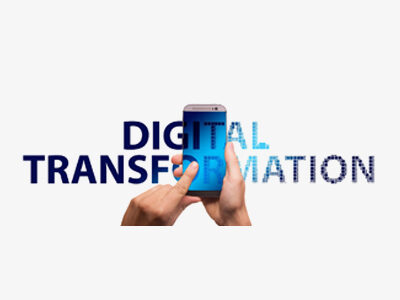How DX is Creating a Whole New World for UX
The digital transformation initiatives have been affecting business executives across various industries. The project can impact the fundamental ways through which the business operated, and these projects need to be completed quickly as well as cost-effectively. For most companies, one of the biggest challenges lies in tackling a poor user experience.

User Experience Innovations: Introduction of VDA
An example of user experience innovation is centered around the growing usage of Virtual Assistants. A few years back, there used to be a time when the business professional would check the calendars on their PDA or personal digital assistants. With technological advancements over these years, these virtual assistants comprise a large part of our lives and have become a standard component of smartphones. The Virtual Digital Assistants or VDAs such as Google Now and Siri by Apple help us in performing tasks hands-free, which ranges from scanning information on the emails to providing reminders on our current activities and even help us by suggesting travel routes. A report published by Tractica has stated that the enterprise adoption VDAs will grow to 1billion active users by the year 2025. During this period, the VDA market will be valued at $7.7 billion in terms of global annual revenue.
User Involvement in Early Phases of Digital Transformation
The very first step in starting the digital transformations is defining which applications are to be built. Also, one should consider the potential customers for the developed application. It is really of no concern, whether the application has internal or external users. The opinion of the users is what determines the adoption and success of the app. When user-experience is involved in the early phases of digital transformation, one can ensure great success on the app.
The primary role of a user-experience designer is to understand the needs and wants of an application or suite of an application’s end users. They shuffle the requirements with the IT needs and business goals to help in shaping the form of application. The involvement of user-experience professionals in the early process helps in ensuring that an application is tailored-fit to meet the needs of end-users. They make sure that the functionality and information which is visible to the user are relevant and easy to use.
It also becomes essential to consider how the user-experience professionals are being integrated into the development team. Using the user-experience professionals in the development team allows the facilitation of conversations regarding what a user needs to see and when. The needs of the end-user can easily influence the entities and attributes within the domain model. Thus, the inclusion of user-experience in the early stages helps in minimizing rework for both- designers as well as developers.
Another advantage of including user experience early is being able to implement the user-interface quickly. The user interface consists of a collection of functional and visual patterns which are perceived to be the user experience for any application. Functional patterns could be simple checkboxes or complex tasks such as building new user accounts. The visual patterns in the user-interface could include fonts, colors, etc. which translates the brand essence of a company to reality. The Sooner the user-interface is integrated into the application development; the sooner it becomes easier for everyone to appreciate the functional development.
Planning User Experience Projects
The integration of user experience into any digital transformation project requires an accurate analysis of the needs of the users. This can be achieved only when surveys or workshops are done or observing the behavioral pattern of the target audience. The data gained from this process can strengthen the UX designers to create a set of tools that can be used for building user profile types and their experience maps, along with a list of some expected obstacles and their solutions. The user experience designers will now develop a list of specifications that can be used for outlining the project architecture and its related interactions and interfaces. This is followed by the designing phase, where the designers build mock-ups and prototypes, which are mostly interactive in nature, and then add the necessary elements to make the content easy to understand. In the testing phase, the design team is responsible for analyzing the user behavior for determining whether the project has catered to the user requirements or not.
Following are criteria to assess the user experience
- Searchability
How easy it is to find a given application or a website?
- Accessibility
How easy it is to use and understand the software?
- Desirability
How much influence has been generated on the users to use the app?
- Consistency
Is it providing the same experience on all the devices?
- Content
To what degree is the user engrossed after going through the content?
- Design
Does it contain a brand-enhancing visual design?
- Usability
How easy it is to use, understand and learn the app or software?
- Credibility
Does it build trust in the users and do they believe in the product or service?
- Usefulness
To what extent are the functions and features valuable?
Role of Mobile in Digital Transformation
The rise of mobile adoption has been significant over the years. The number of features is getting added on a regular basis. The mobiles these days are now equipped with all the basic features and apps which make the user experience better. All the apps are now present on a single screen, and thus with a simpler user-interface, it has reduced the burden on humans for carrying out daily tasks such as- managing calendars, alarms, searching for a location, etc. Thus, it is evident that mobile is becoming an essential driver of digital transformation and is acting as a natural starting point for the sweeping technological changes.
Businesses can firstly lay a technologically sound foundation by means of mobile application development. This, in turn, puts the businesses in a stronger position to effectively grab other aspects of Digital Transformation such as the Internet of Things. These mobile application development companies are not entirely targeted at a consumer end-user. Most of the companies are now developing mobile applications that can support the staff in different corners of the enterprise, hence enabling them to work more efficiently.

- Considering Data Centers in India to Overcome Economic Conditions - May 10, 2022
- Determining Why Your Organization Needs Web Application Security - February 11, 2022
- How Does a Business Benefit with Managed Services - January 21, 2022

